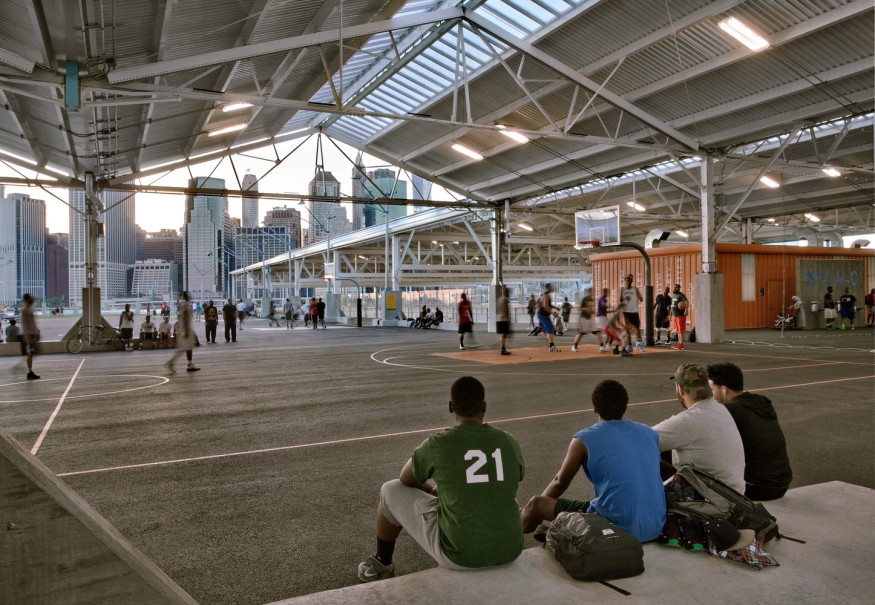Industrial Echoes to Urban Oases: The Resurgence of Waterfront Spaces Through Adaptive Design

Beautiful waterfronts in major cities often hold untapped potential due to the lingering remnants of a bygone industrial era focused on shipping and manufacturing. As economies shift away from these sectors, there's a growing movement to repurpose these neglected spaces into vibrant public amenities. While some cities opt for complete demolition and reconstruction, the transformation of Brooklyn Bridge Park in New York City exemplifies a nuanced approach that preserves industrial character. In their forthcoming book, "Brooklyn Bridge Park," Michael Van Valkenburgh Associates (MVVA) shed light on their design process, emphasizing the integration of existing materiality to weave the site's history into the park's fabric.

Brooklyn Bridge Park Transformation
Once a desolate port in the 1980s, the Port Authority donated Brooklyn Bridge Park's eighty-five acres and six piers to the city following a decade of grassroots efforts. The subsequent thirteen-year design and construction process, concluding in December 2021, demonstrated a visionary approach by MVVA. Rather than perceiving failing infrastructure as a limitation, they saw it as an opportunity to create a unique public space. Existing warehouse structures were preserved and repurposed throughout the park, serving as armatures for lighting or shade structures. These repurposed frames were painted blue to pay homage to the Port Authority. The park's largest original structure, a sports pavilion designed by Architect Maryann Thompson, retained the original shed structure and a reinstalled corrugated roof.
MVVA took a sustainable stance by repurposing reclaimed materials salvaged from the site and city infrastructure. Concrete portions removed from the pier found new life as sculptural features in a water playground, while lumber from the National Cold Storage warehouse was transformed into benches, picnic tables, and playground equipment. Granite salvaged from the reconstruction of two New York City bridges was repurposed, adding to the park's embankments and seating. This holistic approach not only breathes new life into discarded materials but also significantly reduces the environmental impact of construction.
The transformative potential of repurposing industrial structures into public spaces extends beyond Brooklyn. In West Bund, China, Hassel Studio undertook a similar approach. Originally an industrial hub along the Huangpu River in Shanghai, the city turned its riverfront into a thriving public space. Hassel Studio's design strategy prioritized preserving and celebrating the existing site. Buildings along the waterfront were repurposed into museums, and reclaimed materials, including existing concrete panels and paving, were integrated into the new design.

Unlocking Potential and Creating Landmarks:
The metamorphosis of industrial structures into public spaces holds great potential. Beyond the practical benefits of repurposing existing structures, it fosters intriguing juxtapositions between the old and the new. This approach promotes sustainable construction practices and produces spaces distinct to their location, speaking to the city's history and evolving relationship with its surroundings. The outcome is the creation of landmarks that embody a city's resilience, adaptability, and commitment to sustainable urban development.
Repurposing industrial remains along waterfronts signifies a paradigm shift in urban planning toward sustainable practices that honor a city's history while embracing its future. Brooklyn Bridge Park stands as a testament to the success of such an approach, inspiring cities worldwide to reconsider their neglected waterfronts as canvases for creating unique, environmentally conscious, and culturally rich public spaces.














